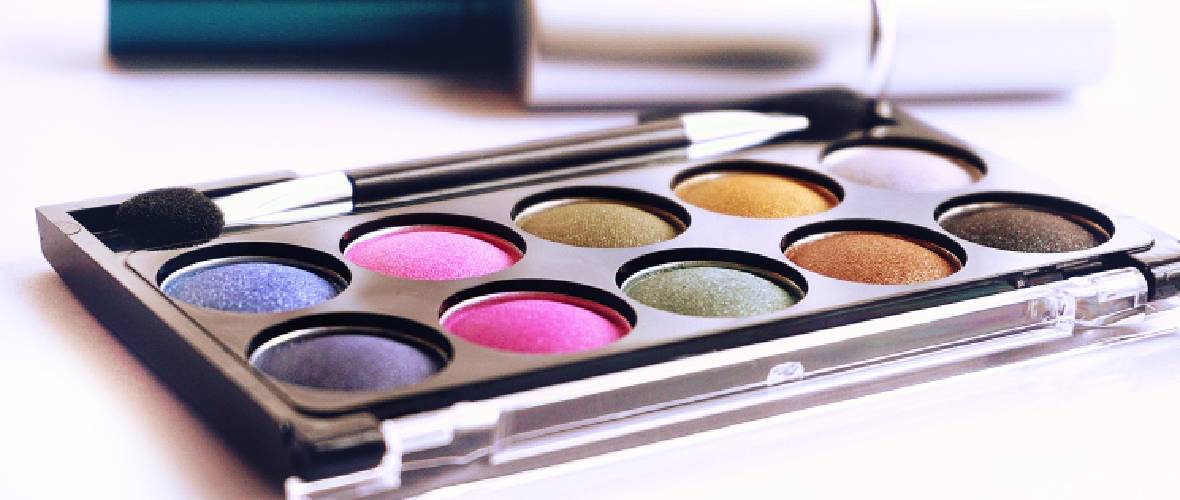Step into the mesmerizing world of makeup artistry, where shadows play a pivotal role in creating captivating looks. This guide, “Best Shadows: Painting Techniques,” unveils the secrets behind mastering the art of shadows. Whether you’re a makeup enthusiast or a seasoned artist, understanding the nuances of shadow application can transform your makeup game.

Importance of Shadows: Depth and Definition
Shadows play a pivotal role in art, offering depth and definition to an otherwise flat surface. Whether in painting, photography, or any other visual medium, shadows add a layer of realism that brings scenes to life. Understanding the importance of shadows is crucial for artists seeking to create compelling and dynamic compositions. By mastering shadow techniques, artists can manipulate light and shadow to evoke mood, enhance realism, and guide the viewer’s gaze.
One of the most effective ways to harness the power of shadows is through painting techniques. Achieving the best shadows requires a keen understanding of light sources, perspective, and form. Artists can use various methods such as chiaroscuro, where stark contrasts between light and shadow create dramatic effects, or sfumato, which employs subtle transitions to achieve soft, atmospheric shadows. By carefully observing how light interacts with objects, artists can create depth and dimension, infusing their work with a sense of realism. Experimenting with different shadow techniques allows artists to push the boundaries of their creativity and produce captivating works of art. So, remember, mastering the interplay of light and shadow is key to creating visually stunning pieces—Best Shadows: Painting Techniques!
Selecting the Right Shadows: A Palette of Possibilities
Selecting the right shadows is a crucial aspect of painting, as it significantly impacts the overall mood and atmosphere of the artwork. Artists have a vast palette of possibilities when it comes to choosing shadows, each contributing unique characteristics to the composition. Whether it’s the cool, serene shadows of a moonlit night or the warm, inviting shadows of a sun-drenched afternoon, the selection of shadows can evoke specific emotions and narratives within a painting. By carefully considering factors such as light direction, time of day, and the desired mood, artists can strategically place shadows to enhance the visual impact of their work.
In the realm of painting techniques, understanding how to select the best shadows is paramount. Artists must explore various color combinations, opacity levels, and brush strokes to achieve the desired effect. They can experiment with complementary or analogous colors to create dynamic contrast or harmonious unity within the shadows. Additionally, mastering techniques like glazing or dry brushing allows artists to control the intensity and texture of shadows, adding depth and dimension to their compositions. By honing their skills in shadow selection, artists can elevate their artwork to new heights, captivating viewers with the interplay of light and shadow—Best Shadows: Painting Techniques!
Eye Shape Considerations: Tailoring Shadows to You
When it comes to makeup application, understanding your eye shape is essential for achieving the most flattering look. Different eye shapes require varying approaches to shadow application to enhance their natural beauty. Whether you have almond-shaped eyes, hooded lids, or monolids, tailoring shadows to suit your eye shape can make a significant difference in how your eyes appear. For instance, individuals with hooded lids may benefit from applying darker shadows slightly above the crease to create the illusion of depth and dimension. On the other hand, those with prominent brow bones can use lighter shadows to highlight and accentuate their eyes’ natural contours.
In the realm of makeup techniques, mastering the art of tailoring shadows to your eye shape is key. By experimenting with different shadow placements and blending techniques, you can accentuate your eyes’ unique features while minimizing any perceived flaws. Techniques such as cut creases or halo eyes can help enhance the natural shape of your eyes, making them appear larger and more defined. Additionally, understanding how to use shadows to create optical illusions, such as lifting droopy lids or elongating round eyes, can further enhance your overall look. By incorporating these best shadows: painting techniques tailored to your specific eye shape, you can achieve stunning results that highlight your individual beauty.
Blending Mastery: Seamless Transitions
Achieving seamless transitions in makeup application is a hallmark of blending mastery. Whether you’re creating a soft, natural look or a bold, dramatic statement, seamlessly blending shadows is essential for a polished finish. With the right techniques and tools, you can effortlessly blend multiple shades together to create a cohesive and harmonious eye look. From using fluffy blending brushes to gently diffuse harsh lines to employing circular motions to seamlessly meld colors together, mastering blending techniques is key to achieving professional-looking results.
In the realm of makeup artistry, understanding the importance of blending mastery is paramount. The best shadows: painting techniques involve layering colors gradually and blending each transition seamlessly to avoid any harsh lines or uneven patches. By starting with a light hand and gradually building up intensity, you can control the depth and dimension of your eye look while ensuring a smooth transition between shades. Additionally, blending shadows not only enhances the overall aesthetic but also ensures longevity and wearability of your makeup. With practice and patience, you can hone your blending skills and create stunning eye looks that rival those of professional makeup artists.
Cut Crease Technique: Precision in Definition
The cut crease technique is a makeup application method that offers precision in defining the eye’s crease, resulting in a sharp and dramatic look. This technique involves carving out a distinct line along the crease using concealer or a light-colored eyeshadow, then applying a contrasting shade above it to create a striking contrast. The cut crease technique is popular for its ability to add depth and dimension to the eyes, making them appear larger and more defined. With careful attention to detail and precise application, this technique can elevate any eye makeup look from ordinary to extraordinary.
In the realm of makeup artistry, mastering the cut crease technique requires skill and precision. The best shadows: painting techniques for a cut crease involve using a small, precise brush to create clean lines and sharp edges. Additionally, blending is crucial to ensure a seamless transition between the cut crease and the rest of the eyeshadow. By practicing patience and attention to detail, you can achieve a flawless cut crease that enhances your eye shape and adds a touch of glamour to your makeup look. Whether you’re going for a subtle cut crease for daytime or a bold, dramatic cut crease for evening, mastering this technique will elevate your makeup game to the next level.
Smoky Eyes: Effortless Elegance
When it comes to achieving an effortlessly elegant look, few makeup techniques rival the timeless allure of smoky eyes. This versatile style has been a favorite among makeup enthusiasts for its ability to exude sophistication with ease. The key to mastering smoky eyes lies in employing the best shadows: painting techniques. Start by selecting a range of complementary shades, from lighter neutrals to deep, rich hues. Apply a base color across the eyelid to create a smooth canvas, then gradually layer darker shadows along the crease and outer corner of the eye. Using a blending brush, seamlessly blend the colors together to achieve a soft, diffused effect that adds depth and dimension to the eyes.
The beauty of smoky eyes lies in its adaptability to various looks and occasions. For a subtle daytime look, opt for lighter shades and blend them out for a softer effect. For a more dramatic evening look, intensify the colors and add a touch of shimmer for extra allure. Experiment with different techniques, such as tightlining the upper lash line or smudging eyeliner along the lower lash line, to further enhance the smoky eye effect. With practice and the right tools, anyone can master the art of smoky eyes and effortlessly exude elegance and sophistication with every glance.
Monochromatic Magic: Coordinating Colors
Monochromatic makeup looks are a testament to the power of coordinating colors to create a harmonious and cohesive aesthetic. This style involves using varying shades of the same color family to achieve a unified and polished appearance. Whether you prefer soft neutrals or vibrant hues, mastering the art of monochromatic makeup requires a keen eye for color coordination and the best shadows: painting techniques. Begin by selecting a primary color and exploring its range of shades, from light to dark. Apply a lighter shade as a base across the eyelid, then gradually build depth and dimension by layering darker shades along the crease and outer corner of the eye.
In the realm of makeup artistry, understanding how to coordinate colors is essential for achieving a flawless monochromatic look. Experiment with different textures, such as matte, shimmer, and metallic finishes, to add dimension and interest to your makeup. Blend meticulously to ensure seamless transitions between shades, and use strategic placement to highlight and accentuate your features. Whether you’re creating a monochromatic look for a casual day out or a special occasion, mastering the art of coordinating colors will elevate your makeup game and leave you feeling confident and polished.
Glitter and Shimmer: Sparkling Accents
Glitter and shimmer add a touch of glamour and sparkle to any makeup look, making them popular choices for special occasions and festive events. These dazzling accents can elevate a simple eye makeup look to something truly spectacular. Whether you prefer a subtle shimmer or a bold glitter statement, mastering the art of incorporating glitter and shimmer into your makeup routine requires careful consideration of the best shadows: painting techniques. Begin by selecting high-quality glitter or shimmer eyeshadows that complement your desired look. Apply a small amount to the center of the eyelid or inner corner of the eye for a subtle pop of sparkle, or layer it over other eyeshadows for a more intense effect.
In the realm of makeup artistry, understanding how to effectively use glitter and shimmer is key to achieving a polished and cohesive look. Experiment with different application methods, such as using a flat brush for precise placement or your fingertips for a more diffused effect. To prevent fallout, consider using a glitter glue or a tacky eyeshadow base to help the glitter adhere to the skin. Additionally, pair glitter and shimmer eyeshadows with complementary matte shades to create balance and depth in your makeup look. With practice and the right techniques, you can incorporate glitter and shimmer into your makeup routine with confidence and flair, adding a touch of sparkle to every occasion.
Conclusion: Your Canvas, Your Masterpiece
In the world of makeup artistry, your face is your canvas, and with the right techniques, you have the power to create your own masterpiece. Whether you’re experimenting with bold colors, mastering the art of blending, or adding shimmering accents, the possibilities are endless. By understanding the best shadows: painting techniques and honing your skills, you can unleash your creativity and express your unique style through makeup.
Remember that makeup is a form of self-expression, and there are no rules when it comes to creating your look. Embrace your individuality, play with different colors and textures, and have fun with your makeup journey. With patience, practice, and a willingness to explore, you can unlock your full potential as a makeup artist and create stunning looks that reflect your personality and inner beauty. So, pick up your brushes, choose your colors, and let your imagination run wild—your canvas awaits, and your masterpiece is waiting to be revealed.

